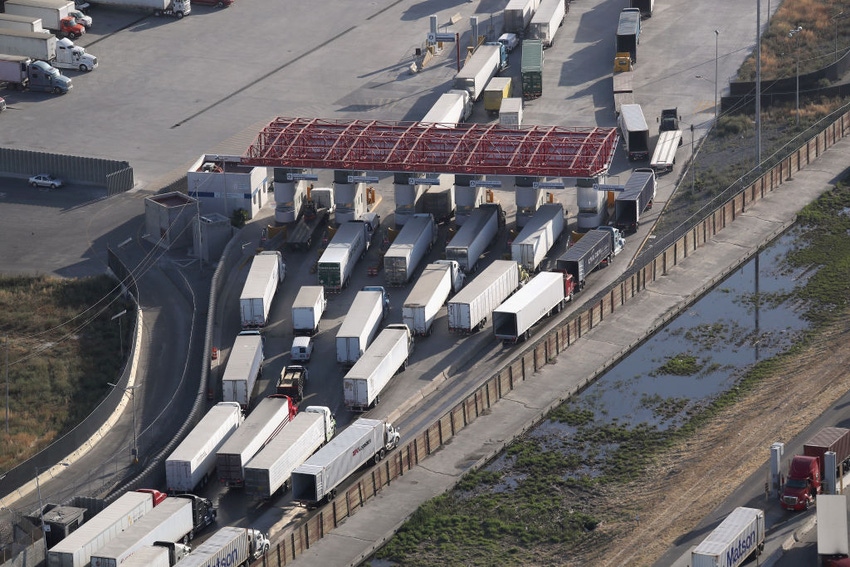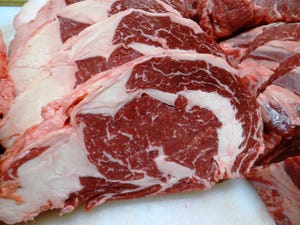NAFTA nears crux, Trump team to China
The calendar, economic and political pressures have created momentum on trade negotiations.
April 27, 2018

Two major trade issues—NAFTA and China—may soon be coming to a close. President Trump is pushing for a NAFTA agreement in principle within less than two weeks, approximately May 4. And during a news conference with French President Emmanuel Macron, Trump said that it was the Chinese who had asked that Treasury Secretary Steven Mnuchin come to Beijing. The team has since been enlarged to include USTR Robert Lighthizer, economics adviser Larry Kudlow and protectionist economist Peter Navarro.
High level NAFTA negotiators met with Lighthizer on Friday, April 20thin Washington, with lower negotiators working through the weekend. The high-level negotiators from all three countries met again Tuesday in Washington.
The goal is to hammer out an agreement in principle by early May, so that final details and language could be available soon after—well before Mexico’s July 1 elections. The other deadline window negotiators are trying to beat is the formal notice and voting requirements of Congress.
Some members of Congress are already making noises about disrupting the process. Congress is required to give trade treaties an up or down vote but, having set the rules and wish list for trade treaties, they also can demand the executive branch meet those requirements and goals.
A simple majority vote is required in both houses. Trump has used his threat to withdraw from NAFTA if he doesn’t get a satisfactory new deal as leverage over both the other countries and Congress. A number of congressmen have disputed Trump’s legal authority to pull out of NAFTA, but a law Congress passed in 1974 gives a president the power to do so.
That law is significant, according to Warren Maruyama, who served on USTR Clayton Yeutter’s staff in negotiating the U.S.-Canadian treaty that was a NAFTA precursor. He was on President George W. Bush’s White House policy staff while NAFTA was negotiated and later was general counsel for USTR Susan Schwab. His current law portfolio involves free trade, WTO, TPP and TTIP for a major Washington D.C. law firm.
In general, Maruyama said Congress has delegated broad authority to the president to withdraw from trade agreements and to impose higher tariffs for various reasons.
The Trade Act of 1974 gave the president the authority to negotiate free trade agreements, he explains. Section 125 gives the president what is commonly referred to as “termination and withdrawal authority.” Section 125a requires the U.S. to have power to withdraw from every trade agreement after appropriate notice—usually six months. Section 125b allows the president to revoke previous tariff reductions and Section 125c gives the president authority to proclaim higher tariffs within certain limits.
The bottom line, Maruyama says: if Trump wants to terminate NAFTA, he can.
In the meantime, the main sticking points continue to be the same: auto and auto parts manufacture, the dispute resolution process and government procurement. It appears the auto industry issues can be handled more easily than dispute resolution. Most American businesses, plus Canada and Mexico, prefer the present NAFTA system, which Lighthizer doesn’t like.
Then there’s China
For a while, China publicly played it cool and said it was not negotiating and did not intend to, signaling displeasure with imposed and threatened tariffs. But it has been talking behind the scenes. And at a major Asian economic conference a few weeks ago, President Xi said in a speech that China might have to lower some tariffs and institute more protections for intellectual property. Elsewhere, he also talked about “historic opportunities” in technology, expanded fair markets, more protected intellectual property and more competition, things requested by Chinese companies and foreign investors.
We must remember that China is not too far removed from the days of centrally planned and centrally owned economies. Bei Zhao, an economist at Xiamen University in China and veteran of 10 years in Canada, told an audience in Colorado Springs that China is bracing for a “new era” and “new development.”
While centrally planned campaigns since 1949 have managed to create wealth for the coastal areas, developed major exporting industries and drawn many rural people into the cities, the wealth has not been evenly distributed. Ambitious overall goals have not been met as hoped.
Although the market-based system China has encouraged since Deng Xiaoping’s time in the late ‘80s has been responsible for the tremendous growth of China’s economy, current Chinese leaders evidently believe they understand the market economy well enough to hand dictatorial powers to Xi, to fix the ills of the Chinese economy without damaging the market structure. The Chinese debt is 2.5 to 3 times its GDP, including responsibility for both national and regional debt. The government is bankrolling major military development and investing in key manufacturing inputs around the world.
President Xi was not given permanent tenure and expanded policy and economic powers to pussyfoot around international negotiations. He has the power to command accommodation by various state-owned industries and governing bureaucracies.
The fear of the People’s Congress and top Chinese leadership of a coming economic crisis in China is the reason Xi was given almighty power in China. Chinese leaders are always fearful of unrest in the countryside, making them wary of too much economic pain or unrest.
Zhao said China does not believe in tariffs as a tool of trade negotiations but does want trade “liberalization.” But border tariffs are one of the two sources of government revenue, along with taxes.
The bottom line: whether he makes good or bad decisions, Xi has the power to make them. He has a couple trusted colleagues helping with the economy but if he feels certain concessions or adjustments need to be made to keep China’s economy moving and remove distractions from its global, regional and domestic goals, he calls the tune. The question is if Trump’s personal relationship with Xi combined with Xi’s goals and Trump’s tariff power to rile and punish will carry the day or if Xi will refuse to change.
Dittmer is a longtime beef industry commentator and executive vice president of the Agribusiness Freedom Foundation.
About the Author(s)
You May Also Like





